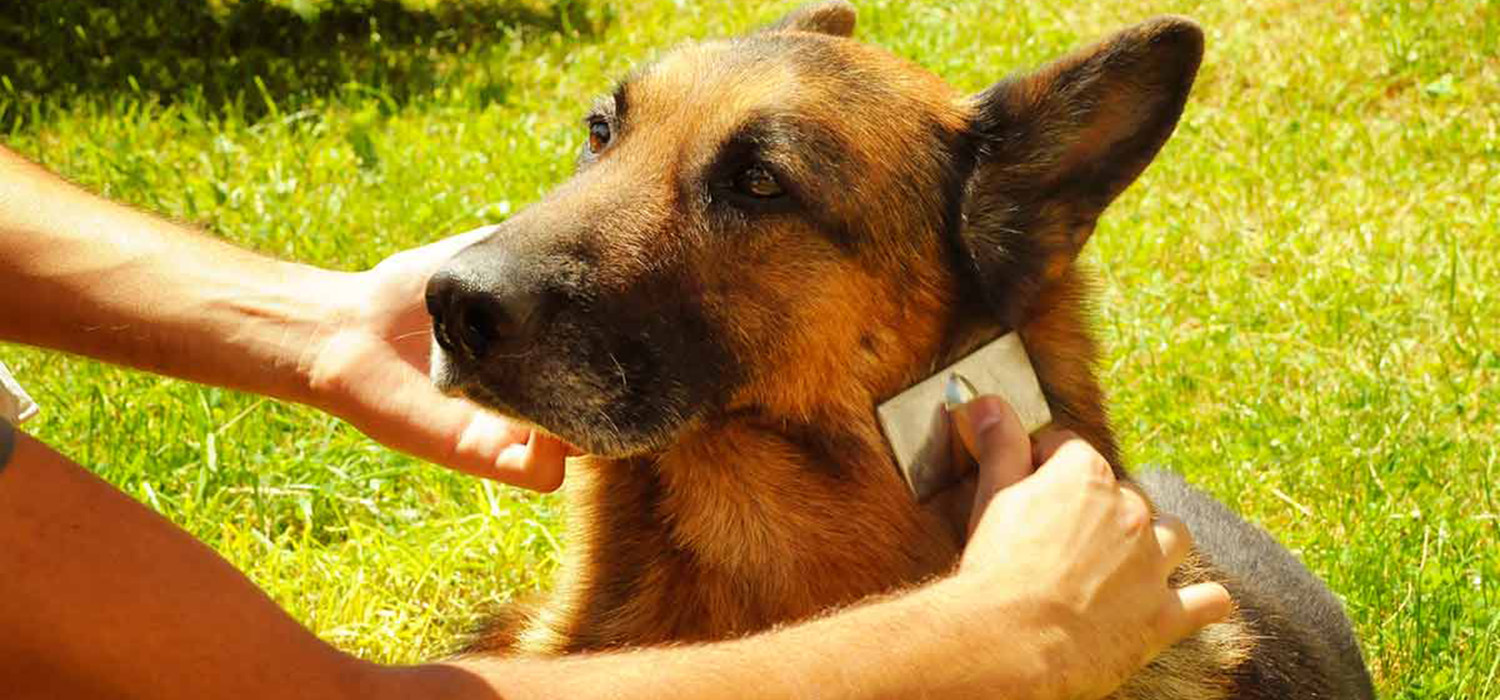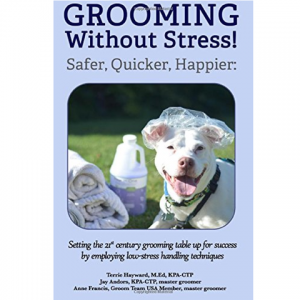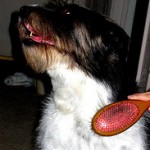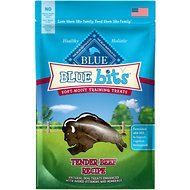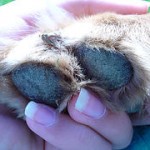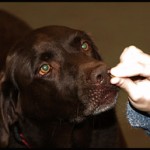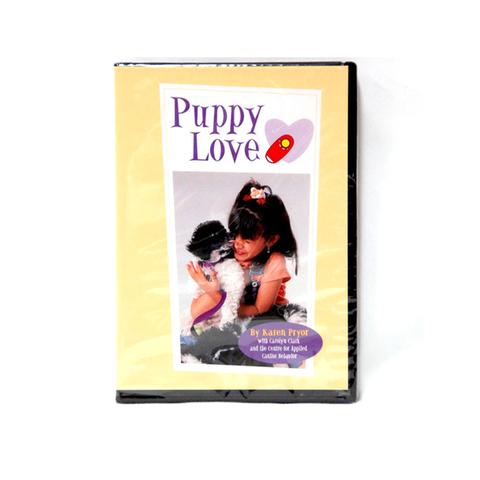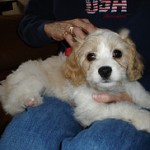 It is best if your dog grooming training starts the day you first bring your puppy home. Why? There is only a window period from the 8 to 12 week age where dogs are most open to socialization and accepting of their experiences. Start by training your dog to enjoy being handled by every member of the family.
It is best if your dog grooming training starts the day you first bring your puppy home. Why? There is only a window period from the 8 to 12 week age where dogs are most open to socialization and accepting of their experiences. Start by training your dog to enjoy being handled by every member of the family.
In this book, Karen Pryor Academy (KPA) Certified Training Partners (CTPs) Terrie Hayward and Jay Andors, along with renowned groomer Anne Francis, offer ways to develop a relationship of respect, cooperation and trust by teaching the animal those behaviors that allow for a safer, healthier, more enjoyable grooming relationship!
This should include examination all over, playing with the paws, looking in the mouth and also in the ears. Make sure you have lots of visitors and ask them to do the same. This handling will go a long way to training the dog to enjoy being handled and is good preparation for the first clipping and grooming session. Even if you get a dog with a short coat which won’t need regular grooming and clipping, this handling is important so that the dog becomes used to people examining him all over. Getting the dog used to having the paws handled is important as it could be quite likely that the nails may need clipping from time to time. Your dog needs to get accustomed to being handled by as many people as possible from a young age in order to alleviate any stress, particularly for those dogs who are going to need grooming on a regular basis. Your dog will need regular check-ups at the vet so training a young puppy to enjoy being handled and groomed all over will make things much easier when it comes to vet checks.
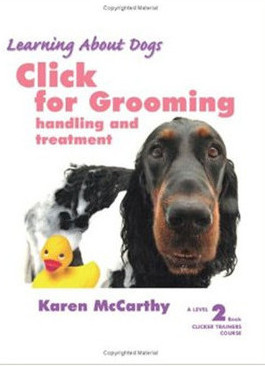
This book, Click for Grooming, available from Clickertraining.com, is directed towards teaching both owner and groomer how to use the clicker methods in order to make grooming and enjoyable process for both dog and caregiver alike. As a professional groomer and dog trainer, Karen has been able to combine both roles to show how all dogs can enjoy the process, and remove the stress often associated with handling. Small or big, young or old every dog that Karen has groomed loves the outcome. They prance and run around with a renewed sense of invigorated freedom. It’s not only the dog’s that love it, the owners too are always pleased, their dog looks good, feels good and smells great – a combination that inspires happiness all round.
“This is more than a book for groomers. It’s an illustrated, step-by-step guide for using clicker training to teach any dog to be completely at ease and cooperative with physical care, including medical treatment, baths, clipping, and ear, tooth, and nail care. In the zoo world they call it husbandry behavior, and use the clicker to trim hooves (think rhinos and giraffes), draw blood, and give shots (think tigers and killer whales). How come we’re still muzzling dogs? This book is full of practical tips; for example I was tickled by the photo essay on how to teach big dogs to put themselves on the grooming or examination table (provide moveable steps). This book will be invaluable to vet techs, conformation show folks, breeders, and of course, to groomers.” —Karen Pryor
Using Treats
When using treats to reward bear in mind the following:
- Do not train and treat after your dog has been fed – he/she will not be hungry.
- Use high value treats for training sessions only – do not feed these with the normal meal times.
- High value treats are whatever the dog loves and gets excited to receive.
- Use soft food that slides down the throat rather than hard treats which the puppy has to chew, ie. cheese, soft liver treats, meat or sausage, etc.
- When using treats, make allowances for these at the dog’s meal time – you do not want to overfeed your dog so he/she gets overweight.

Grooming with a Brush and Comb
Start training your dog to enjoy being groomed by getting an appropriate size and type of dog grooming brush and/or dog grooming comb for your dog’s coat. Gently give your puppy a brush for very short periods of time on a regular basis. Rub your hands down the back, around the stomach area, down the legs – get your dog used to being handled. In particular, get your puppy used to being brushed and combed in the areas where matting tends to occur, i.e. around the ears, the tail, under the belly area and under the shoulders. Part of your dog’s training should be with strangers. Give the puppy high value treats, initially, as you handle him so he associates the grooming and handling as a pleasant experience, however these treats should be weaned down as he/she gets used to the handling and eventually to the point where you might just give a treat randomly.
Blue Buffalo Blue Bits Tender Beef Recipe Soft-Moist Training Dog Treats
Your pal will give you his undivided attention with the Blue Buffalo Blue Bits Tender Beef Recipe Soft-Moist Training Dog Treats. Designed to make training that much more enticing, these moist, bite-sized treats are made with protein-rich, USA beef as the first ingredient for a dose of meaty goodness in every irresistible morsel. They’re also loaded with DHA from salmon oil to support healthy cognitive development in growing puppies, and omega-3 and 6 fatty acids to promote a healthy skin and coat. Plus, they’re free of any chicken or poultry by-product meals, wheat, soy, corn, or anything artificial so you can feel good about treating your pal every day.
Key benefits:
- Made with USA beef as the first ingredient so it’s high in protein and has the meaty flavor dogs love.
- Perfectly sized for training and is ideal for puppies or adult dogs; comes in an on-the-go ready bag that’s easy to take to the trainer’s or the park.
- Formulated with omega-3 and 6 fatty acids for skin and coat health, and salmon oil-sourced DHA to support cognition in puppies.
- No artificial preservatives, colors or flavors, just natural treats for dogs of all sizes and ages
- Made in the USA with zero chicken or poultry by-product meals, wheat, soy, corn, or artificial preservatives, colors or flavors.
Grooming with Scissors and Clippers
The above principles of training apply to the use of grooming scissors and dog grooming clippers. Expose the puppy to these tools, without turning the clippers on. Once the dog is familiar with the sight of them, turn the clippers on and off. A treat could be given as the clippers are turned on. Observe the puppy’s reaction and if the puppy shows any signs of fear or uncertainty, leave it at that. Next time, turn them on randomly when the puppy is playing or engaged in something else and at a further distance away. When the puppy appears not to be bothered by the noise then start turning the clippers on at closer distances. It shouldn’t take too long for the puppy to get used to the noise, especially if he is being treated or engaged in some form of enjoyable activity at the same time.
Paw and Nail Handling
Another important aspect of grooming is teaching your puppy to enjoy having the paws handled in preparation for nail clipping and/or paw fur trimming. Start by handling the puppy’s (or dog’s) paws everyday as many times as possible. Give the puppy a treat as the paw is being handled so that a good association with paw handling is being created. Once the puppy is happy to have anyone touching, massaging and examining the paws all over then introduce him or her to the dog grooming scissors or dog nail clippers. Without scissoring or clipping nails at this stage, place the equipment against the puppy’s paw and allow him or her to feel it, remembering to treat the puppy at each new advancement. Have someone hold a treat (see dog treat recipes for some tasty treats) to distract the dog if he/she is wriggling.

Getting the Dog Used to the Grooming Equipment
Once you are certain that the puppy is comfortable with the equipment and having his paw held reasonably firmly and is still and quiet, take the scissors or nail clippers and trim one nail or scissor a little fur. If this has caused no undue concern to the puppy give him a treat. Then do the next nail or scissor a little more. (Refer to the pages on Clipping Your Dog’s Nails and How To Trim Your Dog’s Paws). For each step reward the puppy or dog for putting up with this. Keep going with this until the puppy or dog starts to show signs of restlessness or agitation and then give it a rest for a while – it is always best if you stop before the dog gets to this point but with the aim of increasing the grooming time incrementally each time you do this. You can go back to the job later. It may be that you only get one paw done at a time. This is absolutely fine. After a while, once the dog is used to this routine, you should be able to get to the point where you can trim the dog’s nails and paws all in one go.
Why not keep a record of the progress of your dog’s training with a Dog Training Diary from Amazon.com
! See how quickly your dog can learn!
Positive Training
A dog will be much more willing to learn with positive dog training methods. Positive dog training makes your dog easier to handle and positive reinforcement produces desired behavior. Using a reward system to train your dog to be groomed will make grooming a lot more pleasant and easier for the both of you.
When your dog stands still while you brush – treat or use another type of reward!
When your dog allows you to play with the paws – reward again!
Make puppy training for grooming and clipping a pleasant experience.
From a young age get your puppy used to the sounds of clippers, vacuum cleaners, hair dryers, etc. and any other noise so that it won’t be such a frightening experience when you finally come to the clipping, bathing and drying.
Commencing from an early age will teach your dog that nothing bad is happening so your dog will start to enjoy getting the attention from these dog grooming training sessions.
Look out for ‘Puppy Love DVD’ from Clickertraining.com in the Video Shop
Learn clicker training basics from the master! In Puppy Love, Karen Pryor introduces the basics of clicker training. From the grandparent and parents down to the kids, everyone can help the new pet learn:
Where to sleep
The right place to “go”
Good manners around people and other dogs
Accepting grooming and pet care
Sitting instead of jumping up to greet you
What “is” and “is not” okay to chew
Coming when called
Cute and easy tricks
Walking on a loose leash, right from the start!
You’ll love what this DVD will do for your new puppy and for you!

